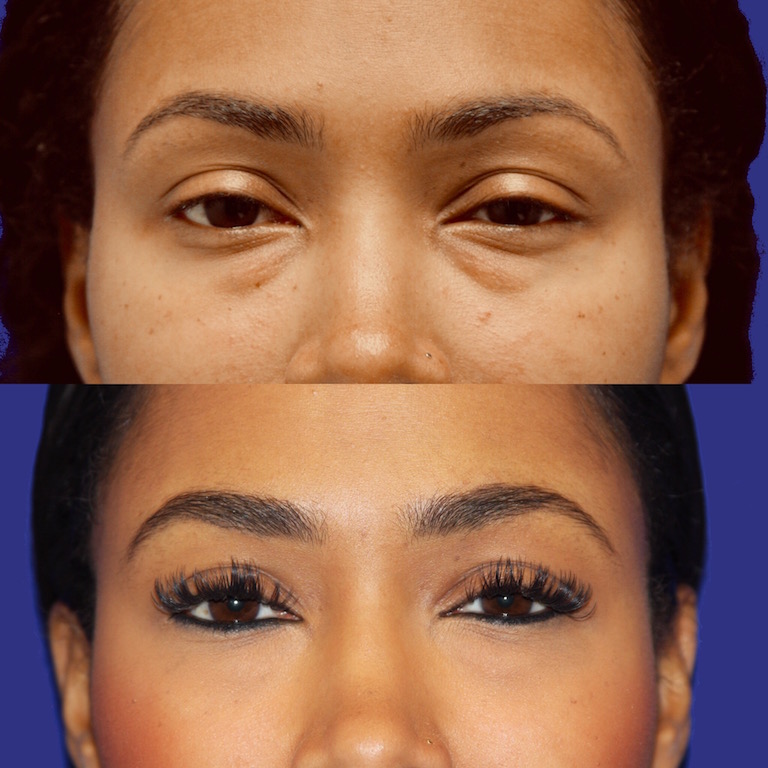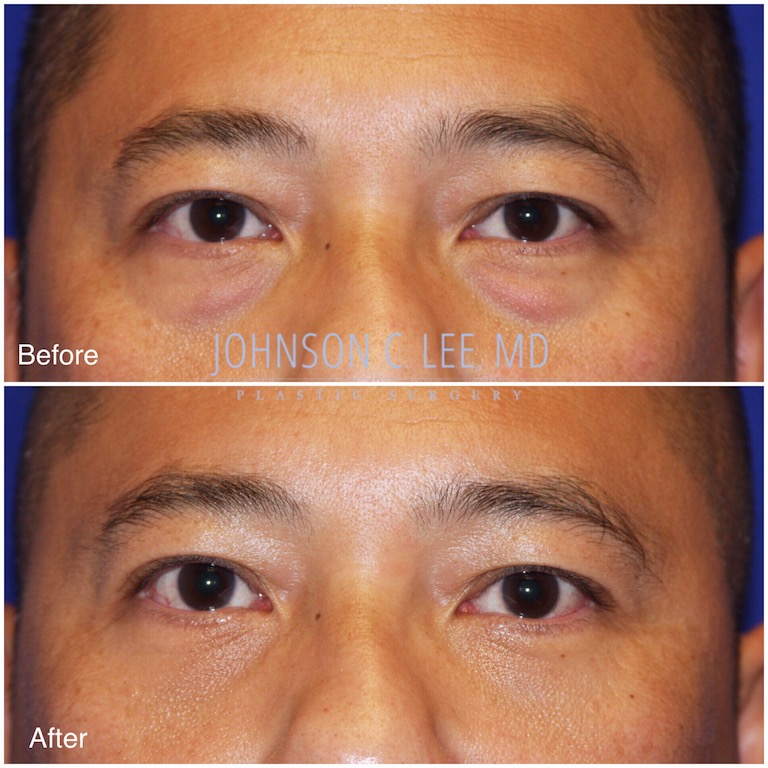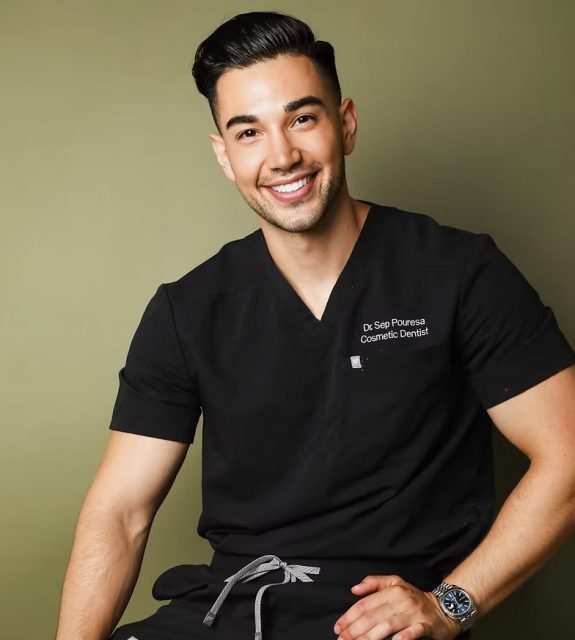 Photo Credit: Photo By Dr. Johnson Lee
Photo Credit: Photo By Dr. Johnson Lee
HB: What is a Lower Blepharoplasty?
Lower Blepharoplasty or Eye bag surgery is a very popular procedure in which the fatty bags below the eyes are removed or repositioned and the eyelid-cheek junction is smoothed out for a younger more refreshed look.
HB: How does eye bag surgery work?
There are two approaches to eye bag surgery. The external approach uses an incision just along the lash line which disappears into a natural crease. This approach allows removal of extra skin and tightening of the eyelid if necessary and more extensive lifting of the area around the eye. The internal or transconjunctival approach uses an incision behind the eyelid. This incision is completely hidden and therefore often preferred if extra skin or sagging is not an issue.
HB: Who is the best candidate for this procedure?
The best candidate for these procedures are patients who have prominent eye bags and/or deep tear troughs. Younger patients with good skin elasticity and minimal excess skin are the best candidates for the internal approach. Older patients or patients with extra skin and weak support of the eyelid may be better served with the external approach.
 Photo Credit: Photo Courtesy of Johnson Lee
Photo Credit: Photo Courtesy of Johnson Lee
HB: How does this treatment compare to others of the same nature?
Surgical lower blepharoplasty offers a long-term solution but has approximately two weeks of downtime. Other options include laser treatments which can tighten skin but will not address the fat compartments or eye bags. Filler is also a popular option in patients looking to avoid surgery. Rather than removing the bags and blending the tear trough, fillers lift the skin to camouflage the bag. Non-surgical treatments have significantly less downtime however will require continued treatments to maintain the appearance.
HB: What does recovery look like?
Patients should expect one week of bruising and one additional week of swelling. Most people are fine to go back to their daily living within the first week as wearing glasses can help hide the fact that they had surgery. Some patients may experience early eye irritation or dry eye sensitivity but this is expected to resolve as the inflammation resolves. Patients are given both topical and oral antibiotics to minimize the risk of infection. Depending on the surgical approach, a few sutures may need to be removed in the office after one week.
For more information, visit Dr. Johnson Lee's social media:






















